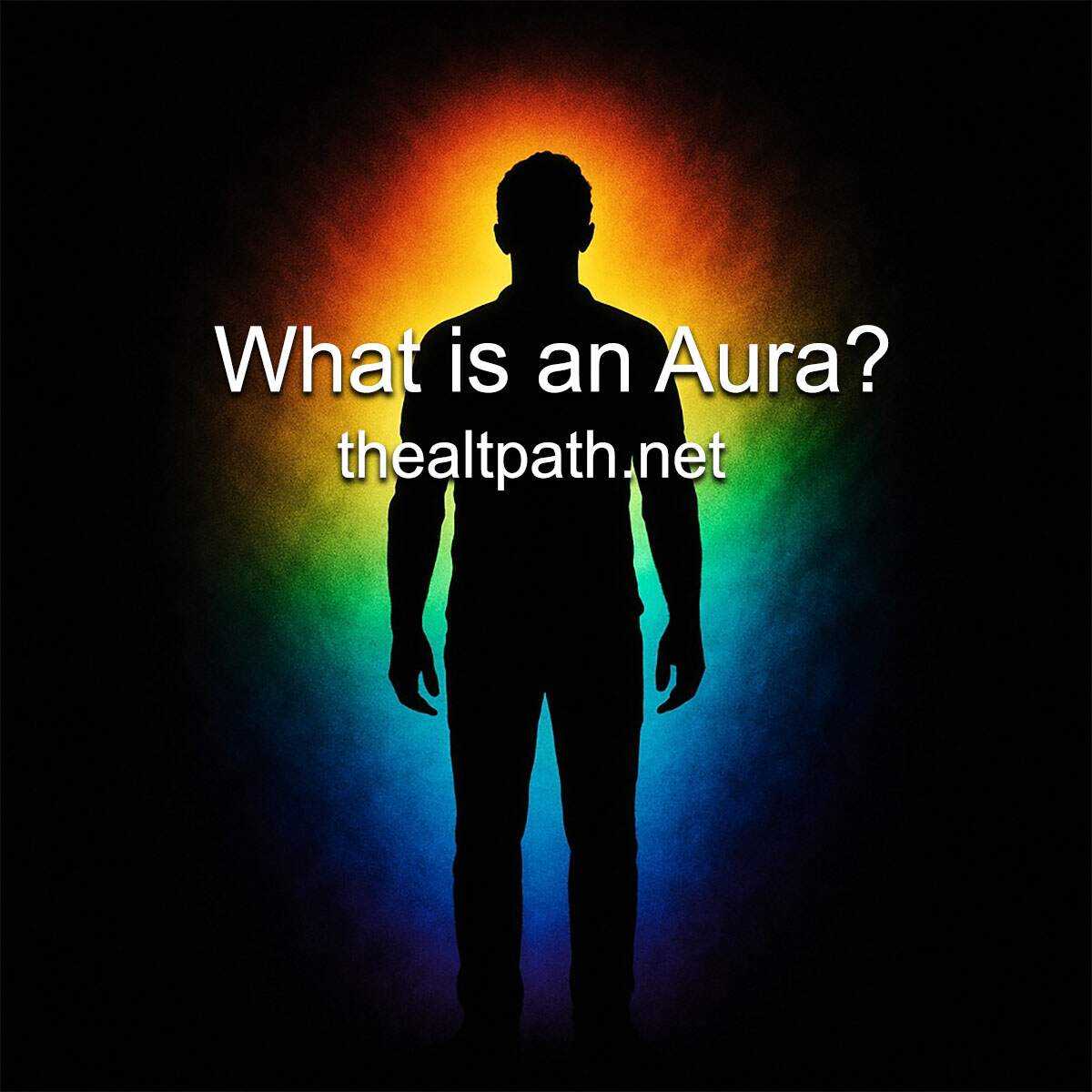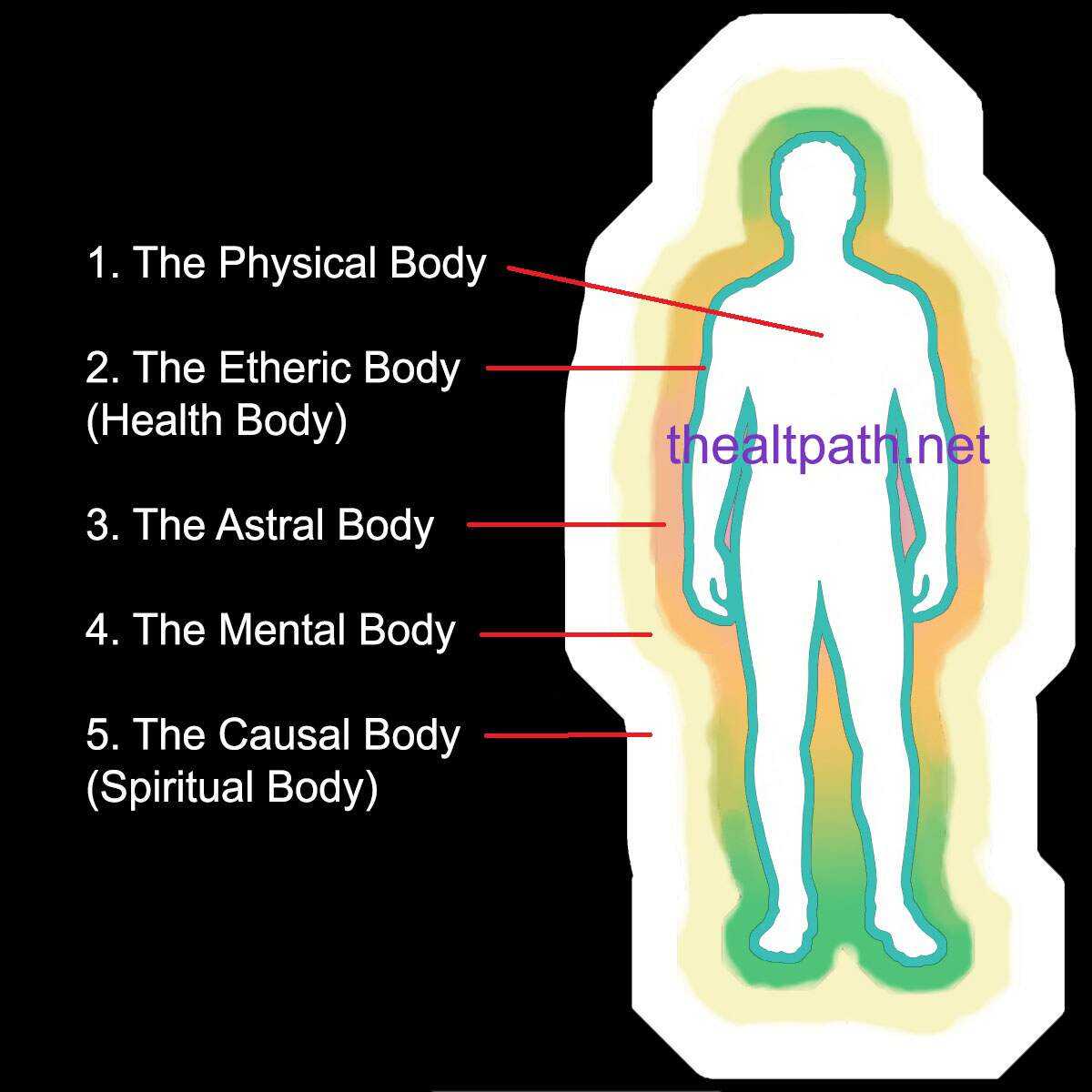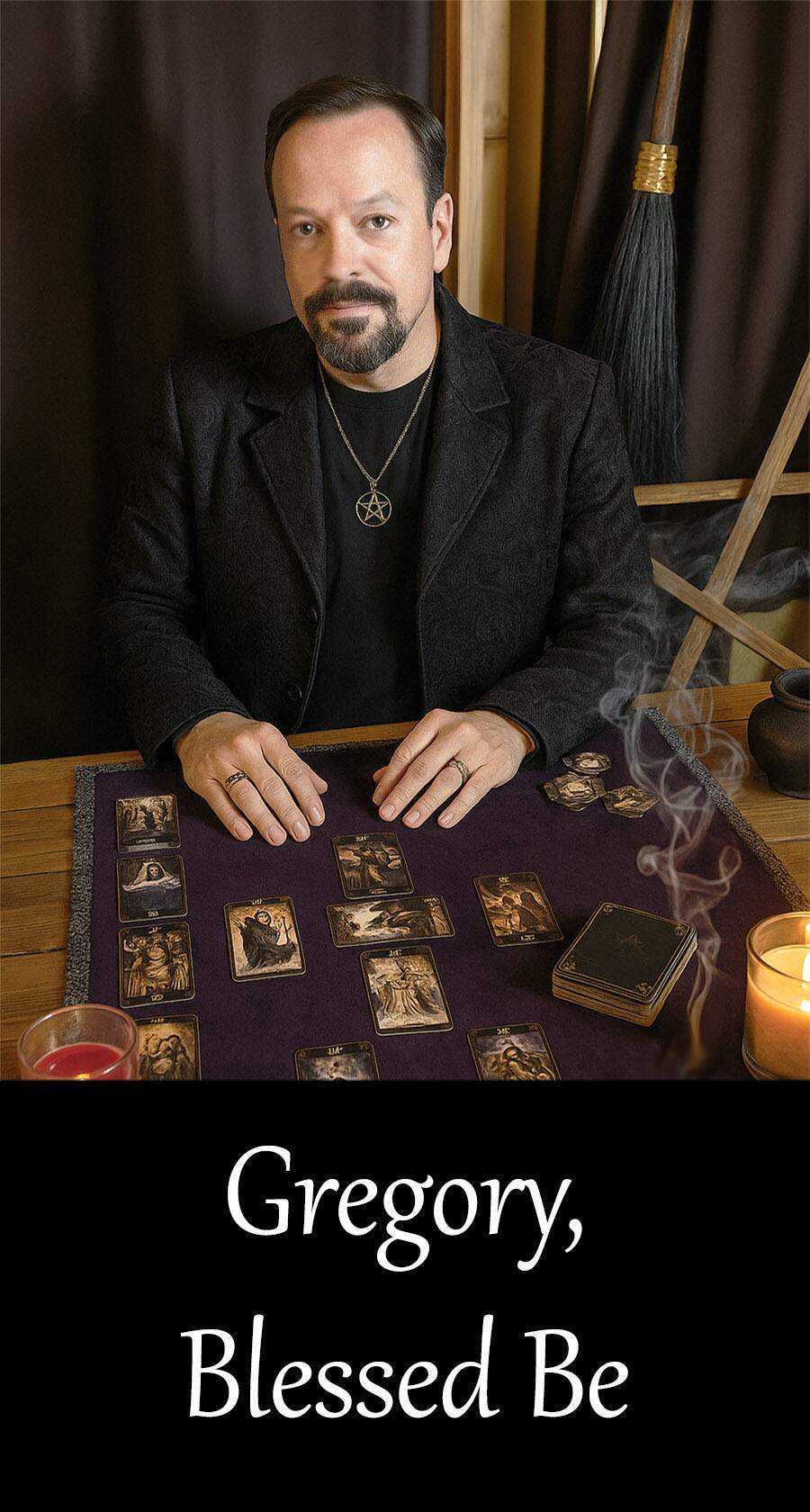What Is an Aura? When people ask me what an aura is, I often pause because the answer depends on who you ask and what century they were born in. For some, an aura is simply a measurable electromagnetic field that surrounds every living thing. For others, it is a shimmering field of light that reveals emotion, vitality, and spirit. Personally, I think it’s both, and probably a few things science hasn’t figured out yet.
 Some people only focus on, see or read certain layers of auric energy (detailed more down below), due to simply working with what is naturally familiar.
Some people only focus on, see or read certain layers of auric energy (detailed more down below), due to simply working with what is naturally familiar.
In this post and future posts, you’ll learn to see more of it.
The Origin and Meaning of the Word
The word aura comes from the ancient Greek word avra, meaning breeze, breath, or gentle air. In fact, the Greeks used it to describe the subtle movement of air around living beings. Therefore, the word hints at something delicate, invisible, and constantly in motion. Moreover, early philosophers viewed this “breeze” as life’s essence, the unseen force animating all existence. Eventually, avra evolved into aura, keeping its meaning of subtle energy or radiance.
Language often carries wisdom our instruments can’t yet measure. The ancients described the aura as the energy that connects all things, while modern researchers use terms like “biofield,” “electromagnetic field,” and “energy signature.” Different vocabulary, same mystery.
I recommend learning to achieve a state of alpha brainwave if you want to learn to see and read auras. Some find clearing energy, like with smudge sticks and burning incense or resins conducive for psychic work help with auric sight exercises. I like holding, wearing or having near me, certain crystals that boost psychic talents like lava, labradorite or amethyst for example.
Check into some metaphysical jewelry while you’re here. We also have a lot of these goods in our brick-and-mortar metaphysical shop too.
Scientific and Historical Foundations
Let’s start with what science can confirm. Indeed, every object, living or not, emits some form of energy. Furthermore, our bodies produce heat, light, and electromagnetic radiation. Clearly, that’s not mysticism; that’s physics. Additionally, the human body operates on electrical impulses. As a result, our neurons fire, our hearts beat, and every cell hums with measurable current.
Moreover, scientists agree that each person radiates heat, which can be seen through infrared photography. In fact, thermal imaging shows that our skin emits infrared light based on temperature variations. However, beyond heat, we also produce electrical and electrostatic fields. Our nerves generate microcurrents, and these create measurable electromagnetic waves. Studies show that humans emit low-frequency radiation, sometimes up to a hundred kilocycles per second.
While this may sound purely mechanical, energy is energy. What some call an “aura” could easily include both biological and spiritual components, depending on how one interprets “life force.”
Newton’s Light and the Birth of Color Science
To understand how we see energy, we need to travel back to 1666. Isaac Newton, a young scientist fascinated by light, performed a famous experiment using a glass prism. He passed a beam of sunlight through the prism and watched it separate into bands of color: red, orange, yellow, green, blue, indigo, and violet.
That experiment changed everything. Newton proved that white light is not pure but made up of different wavelengths. He demonstrated that each color travels at a slightly different wavelength and speed when it bends through a prism. The discovery built the foundation for modern optics, physics, and later, our understanding of color and vibration.
In 1676, Swedish astronomer Ole Rømer measured the speed of light, finding it traveled roughly 186,000 miles per second, or about 300,000 kilometers per second. That’s fast enough to circle the Earth seven times in one second. Each color’s wavelength determines its vibration: red has the longest, slowest wavelength, and violet has the shortest, fastest one.
Many metaphysical traditions believe these color vibrations correspond to states of consciousness or emotion. Whether you call it science or spirituality, color represents energy in motion.
Light, the Eyes, and John Ott’s Discovery
Fast forward to 1960. During that year, John Ott, a pioneering light researcher, discovered that our eyes have two distinct functions. First, they allow us to see the world around us through the retina. Second, they regulate our biological processes through the hypothalamus and pineal gland, reacting to subtle variations in light frequency.
Furthermore, Ott’s research showed that light doesn’t just let us see; it affects our hormones, energy levels, and emotional state. Therefore, that connection is critical when we talk about seeing auras. Additionally, some people’s eyes and brains may simply process subtle light frequencies differently, allowing them to perceive faint color variations or electromagnetic fluctuations others overlook.
The Nature of the Aura
From a spiritual perspective, the aura reflects our mental, physical, and emotional state. From a scientific standpoint, it’s an energy field produced by electrical activity within the body. Both views are correct in their own way.
Most witches, me included, believe that everything—rocks, trees, animals, and even insects—possesses an aura. Everything vibrates, and everything radiates. Auras are not limited to the human experience; they are the language of energy itself. When we sense an “off” vibe from someone, we might actually be picking up subtle electromagnetic or emotional signals our conscious minds can’t label.
Some believe the aura contains higher consciousness, storing a complete record of who we are. Others describe it as a mirror of personality, emotion, and health. In truth, all these descriptions overlap. The aura seems to bridge science and spirit, a fingerprint of the soul written in light and frequency.
Connect with us for more on Instagram, Facebook (Meta) or TikTok.
The Layers of the Aura
As auric sight develops, people often begin to perceive different layers or “bodies” around the physical form. These are commonly described as five main fields, each radiating farther from the body than the last.

1. The Physical Body – The visible form made of matter, cells, and atoms. It radiates heat, light, and electromagnetic energy.
2. The Etheric Body (Health Body) – Extends about one to two inches beyond the skin. It glows faintly blue or gray and relates to vitality and physical well-being. It acts as a blueprint for the physical body’s structure.
3. The Astral Body – Ranges from six inches to a foot away. It connects to emotions, relationships, and creativity. People often see this layer as colorful, shifting with mood and stress.
4. The Mental Body – Extends up to two feet out. It relates to thought patterns, logic, and intellect. It may appear as pale yellow or gold light, especially during focused mental activity.
5. The Causal Body (Spiritual Body) – The outermost layer, reaching three to four feet from the physical form. It connects to the higher self and spiritual purpose. This layer is often described as luminous, white, or gold.
Each layer interpenetrates the others, like light through glass. Together they create the auric field, a living, breathing reflection of energy and consciousness.
How People Perceive Auras
Perception of the aura varies. Some see it visually as color radiance, while others sense it as vibration, temperature, or intuitive knowing. You might see a faint shimmer around someone’s shoulders, feel warmth or pressure near certain people, or notice color flickers when you close your eyes.
For beginners, the first thing most people notice is the etheric layer, the faint glow close to the body. It looks like heat waves rising from pavement or a soft outline that shifts when you focus on it. With time and relaxed vision, other colors may emerge.
Some researchers attribute this to the sensitivity of rods and cones in the eye. Others argue that aura perception is more psychic than physical, involving extrasensory awareness or the pineal gland’s subtle responses. Both explanations can coexist. After all, our perception of reality already depends on energy, light, and frequency.
Check out books on auras, astral travel dream interpretation.
Auras: Blending, Repelling, and Energy Exchange
When two people meet, their auras do more than simply coexist. Instead, they mingle, respond, and interact in ways that reveal emotion and intention long before words appear. In truth, energy fields behave much like chemistry—some combine harmoniously, while others resist contact completely. Therefore, understanding how auras interact helps explain why we feel instantly drawn to some people and uncomfortable around others.
When energies align, the aura expands, brightens, and flows easily. Consequently, people feel calm, connected, and often uplifted by the exchange. In fact, positive energy creates resonance, allowing two fields to harmonize and strengthen one another. Furthermore, shared optimism, compassion, or joy encourages a blending of light that supports healing and understanding.
However, when someone’s energy turns negative, their aura becomes dense and unbalanced. As a result, it can drain or destabilize others nearby. In many cases, this draining effect occurs around willfully negative individuals or those often called psychic vampires or energy vampires. These people, whether intentionally or not, pull vitality from others to feed their own depleted energy field. Consequently, prolonged exposure leaves others exhausted, irritable, or uneasy.
Everyone is negative here and there about something, it’s a matter of are we willing to bring it back to positive. Don’t confuse this reference of positive and negative polarities, we’re talking about attitudes and emotional energy here.
Because of this, the human body naturally responds by pulling away or avoiding the source of depletion. Moreover, just as a healthy aura blends easily with kindness, it instinctively repels hostility or bitterness. Ultimately, people sense imbalance before they can explain it, and that instinct is self-protection at work. In short, becoming aware of how your aura interacts with others helps you guard your energy, recognize draining influences, and maintain inner harmony.
The Aura and Human Experience
Modern studies in bio electromagnetics have explored how electromagnetic fields affect mood, health, and cognition. While these fields are measurable, their interaction with consciousness remains mysterious. Some experiments suggest that emotional states alter our electromagnetic output, hinting that the aura could indeed be a reflection of our inner world.
Cultures worldwide have recognized similar concepts for centuries. Ancient Indian texts speak of prana, Chinese philosophy describes qi, and the Christian tradition refers to halos around saints. Different names, same glow. Humanity has always sensed that life radiates something unseen yet deeply real.
Even skeptics agree that the human body constantly exchanges energy with its environment. Every heartbeat, every thought, and every emotional surge subtly shifts our energetic field. Whether we call that an aura or not, the phenomenon exists.
Seeing the Aura for Yourself
 Learning to see auras requires patience, relaxation, and focus. Dim light helps, as does a neutral background. Start by looking at your hand against a white wall. Let your eyes relax and notice the faint outline that appears. Do not force it. Over time, you will begin to sense color or density changes.
Learning to see auras requires patience, relaxation, and focus. Dim light helps, as does a neutral background. Start by looking at your hand against a white wall. Let your eyes relax and notice the faint outline that appears. Do not force it. Over time, you will begin to sense color or density changes.
It’s important to approach this gently. The goal isn’t to prove something but to experience subtle energy firsthand. Whether you perceive light, vibration, or warmth, you’re tuning into the body’s living field. The more grounded and balanced you are, the clearer your perception becomes.
The Blended Truth
So, what is an aura? It’s heat, light, electromagnetism, emotion, consciousness, and maybe a few things that defy measurement. It’s the sum of every frequency you emit, the echo of your body and soul interacting with the universe.
Science explains part of it, spirituality fills in what data can’t yet touch, and lived experience ties them together. I believe that auras are both measurable and meaningful. They remind us that existence is more than molecules; it’s movement, vibration, and awareness.
When you realize that everything has an aura, a tree, a stone, a cat, you begin to see life as a woven web of radiant connection. The more you pay attention, the more you sense the hum of unity beneath it all.
Maybe that’s the real secret of the aura. It’s not just what surrounds us; it’s what we are.
References: Isaac Newton’s prism experiments (1666), Ole Rømer’s speed of light measurement (1676), John Ott’s light and biology research (1960), and contemporary studies in bio electromagnetics and human energy fields.
 Therefore, sign up now, free and secure, so you never miss out on tarot lessons, witchcraft, spells, rituals, or money-saving codes and coupons for both our website and physical store.
Therefore, sign up now, free and secure, so you never miss out on tarot lessons, witchcraft, spells, rituals, or money-saving codes and coupons for both our website and physical store.





I find it intriguing how Newtons discoveries on light relate to auras. Could there be a deeper connection between science and spirituality?
I think there is, I’ve often thought “i see no reason why it can’t be both” when it comes to anything metaphysical.
I just read the article on auras and I have to say, I think theyre just a bunch of hocus pocus. I mean, come on, colors around people? Sounds like wishful thinking to me!
Maybe you just havent experienced it yourself. Keep an open mind, you might be surprised.
All this talk about light, color science, and discovery is interesting, but lets stick to facts. I have never seen anyone “glowing”.
Auras may not be your thing but keep an open mind. Exploration can lead to unexpected truths. Some people see them easier than others, but time, practice and training and you will. I suspect you’ve never tried?
I find it fascinating how the concept of aura has evolved over time, from mystical origins to scientific explanations. Do you think our perception of auras is influenced more by history or by science?
I find it fascinating how different cultures interpret auras. Do you think its purely psychological or could there be something more mystical at play?
I think it’s all connected; metaphysical, spiritual, physical – yes, but how all that comes together is also psychological, emotional and circumstantial too.
I found the discussion on the scientific and historical foundations of auras fascinating. Have you ever experienced seeing someones aura? Lets dive into the mystical world of colors and energies!
Auras are pseudoscience, not based on evidence. Stick to facts, not mystical beliefs.
I find it intriguing how the concept of aura has evolved from ancient beliefs to scientific studies. Do you think theres a link between Newtons studies on light and the perception of auras? Just a thought!
I find it fascinating how the concept of aura has evolved through scientific and historical perspectives. I think theres a connection between Newtons work on light and our understanding of auras today.
I started recently with practicing learning the aura colors and it is fascinating what you can actually see if you take the time and study them. I am a new beginner to this but I am seeing goldish colors and sometimes a grey when using my hand. Instead of saying show me the proof and hocus pocus try it.
Hi Megan 🙂 I am super happy you are beginning to see aura energy, keep practicing, more lessons coming on reading auras. 🙂 Blessings!
I am currently only able to see auras around candles and flames easily. I have practiced a few times seeing my own and was never convinced I was seeing my aura. I will start succeeding in small doses again as I can. Thank you.
Good morning, Erika 🙂 Start off by trying the simple tips in this article, and the following article “What Does an Aura Feel Like?” – I have a few more articles to write in this series, but practicing the techniques as you go will spur you on to success in seeing, feeling and reading auras. 🙂 Blessings!
Good morning, Erika 🙂 Start off by trying the simple tips in this article, and the following article “What Does an Aura Feel Like?” – I have a few more articles to write in this series, but practicing the techniques as you go will spur you on to success in seeing, feeling and reading auras. 🙂 Blessings!
So auras arent necessarily just a color some people can see around another person, pet, etc. But it can also be a sense of vibration? Is this similar to intuition or is it different?
Yes, Mary. It’s both, it’s energy and the different layers and types of auras have colors, and all energy has vibration too, including colors. For those interested in reading auras, first learn to really feel them, and seeing them comes along a lot easier.:) Blessings.
Hello all,
I am new to all of this as I am looking to some thing different that I have not thought of trying before.
I must say that I am a christian and that many of the things I have read here remind me of many things that I see and hear today, especially in certain circles.
My question is what is a good “dummies guide” to metaphysics, energy, and other basics.
Or should I just continue to read these blogs that I find to be helpful as well.
Thank you for your assistance
Hello there, JHarvey 🙂 Greg here, I don’t think there is a single best guide to metaphysics, it is such a vast topic. So, a couple of things to help you out, if I may. First, just know that witchcraft is neither good nor evil, the person practicing it is, just like a person can be religious, but that doesn’t make their religion good or evil, it is all about their conduct, right? So, I would say under “how witchcraft works” – start with those posts, in particular I would get familiar with the Seven Hermetic Principles, that’s a great place to start. I also invite you to explore our occult book section too. I would not let the word “occult” throw you either, it simply refers to any practice that is not of the three big world religions, though they all have plenty of mysticism too. 🙂 Hope this is helpful, Blessed Be.